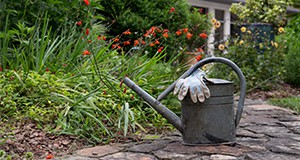Abstract
Because a large percentage of water used in urban areas can be applied through irrigation, home landscape management practices are an important factor of water conservation. The information in this 5-page document is the result of a cluster analysis used to identify meaningful subgroups among home irrigation users to encourage water conservation behaviors. Written by Amanda D. Ali, Laura A. Sanagorski Warner, and Anil Kumar Chaudhary and published by the UF/IFAS Department of Agricultural Education and Communication, May 2018.
http://edis.ifas.ufl.edu/wc291
References
Burns, R. P., & Burns, R. (eds). (2008). Cluster analysis. In Business research methods and statistics using SPSS (pp. 552-567). London: Sage.
DeOreo, W. B., Mayer, P. W., Dziegieleski, B., & Kiefer, J. C. (2016). Residential end users of water, version 2 (Report #4309b). Denver, Colorado: Water Research Foundation.
Dukes, M. D., & Haman, D. Z. (2017). Residential irrigation system rainfall shutoff devices, or rain sensors. AE221. Gainesville: University of Florida Institute of Food and Agricultural Sciences. Retrieved from http://edis.ifas.ufl.edu/ae221
Haley, M. B., & Dukes, M. D. (2012). Validation of landscape irrigation reduction with soil moisture sensor irrigation controllers. Journal of Irrigation and Drainage, 138(2), 135-144. doi:10.1061/(ASCE)IR.1943-4774.0000391 https://doi.org/10.1061/(ASCE)IR.1943-4774.0000391
Jenkins, V. (1994). The lawn: A history of an American obsession. Washington: Smithsonian Books.
Kaplan, S., Myint, S. W., Fan, C., & Brazel, A. J. (2014). Quantifying outdoor water consumption of urban land use/land cover: sensitivity to drought. Environmental Management, 53(4), 855-864. doi:10.1007/s00267-014-0245-7 https://doi.org/10.1007/s00267-014-0245-7
Larson, K. L., Casagrande, D., Harlan, S. L., & Yabiku, S. T. (2009). Residents' yard choices and rationales in a desert city: Social priorities, ecological impacts, and decision tradeoffs. Environmental Management, 44, 921-937. doi:10.1007/s00267-009-9353-1 https://doi.org/10.1007/s00267-009-9353-1
Saurí, D. (2013). Water conservation: Theory and evidence in urban areas of the developed world. Annual Review of Environmental Resources, 38, 227-248. doi:10.1146/annurev-environ-013113-142651 https://doi.org/10.1146/annurev-environ-013113-142651
St. Hilaire, R., Arnold, M. A., Devitt, D. A., Hurd, B. H., Lesikar, B. J., Lohr, V. I., Martin, C. A., McDonald, G. V., Morris, R. L., Pittenger, D. R., Shaw, D. A., Wilkerson, D. C., & Zoldoske, D. F. (2008). Efficient water use in residential urban landscapes. HortScience, 43(7), 2081-2092. Retrieved from http://hortsci.ashspublications.org/content/43/7/2081.full
https://doi.org/10.21273/HORTSCI.43.7.2081
St. Hilaire, R. (2009). The residential urban landscape as a frontier for water conservation. Proteus, 26(1), 13-16.
Syme, G. J., Nancarrow, B. E., & Seligman, C. (2000). The evaluation of information campaigns to promote voluntary household water conservation. Evaluation Review, 24(6), 539-578. doi:10.1177/0013916514543683 https://doi.org/10.1177/0013916514543683
Warner, L. A., Lamm, A. J., Rumble, J. N., Martin, E., & Cantrell, R. (2016). Classifying residents who use landscape irrigation: Implications for encouraging water conservation behavior. Environmental Management, 58(2), 238¬253. doi:10.1007/s00267-016-0706-2 https://doi.org/10.1007/s00267-016-0706-2
Unless otherwise specified, articles published in the EDIS journal after January 1, 2024 are licensed under a Creative Commons Attribution-NonCommercial-NoDerivs 4.0 International (CC BY-NC-ND 4.0) license.

